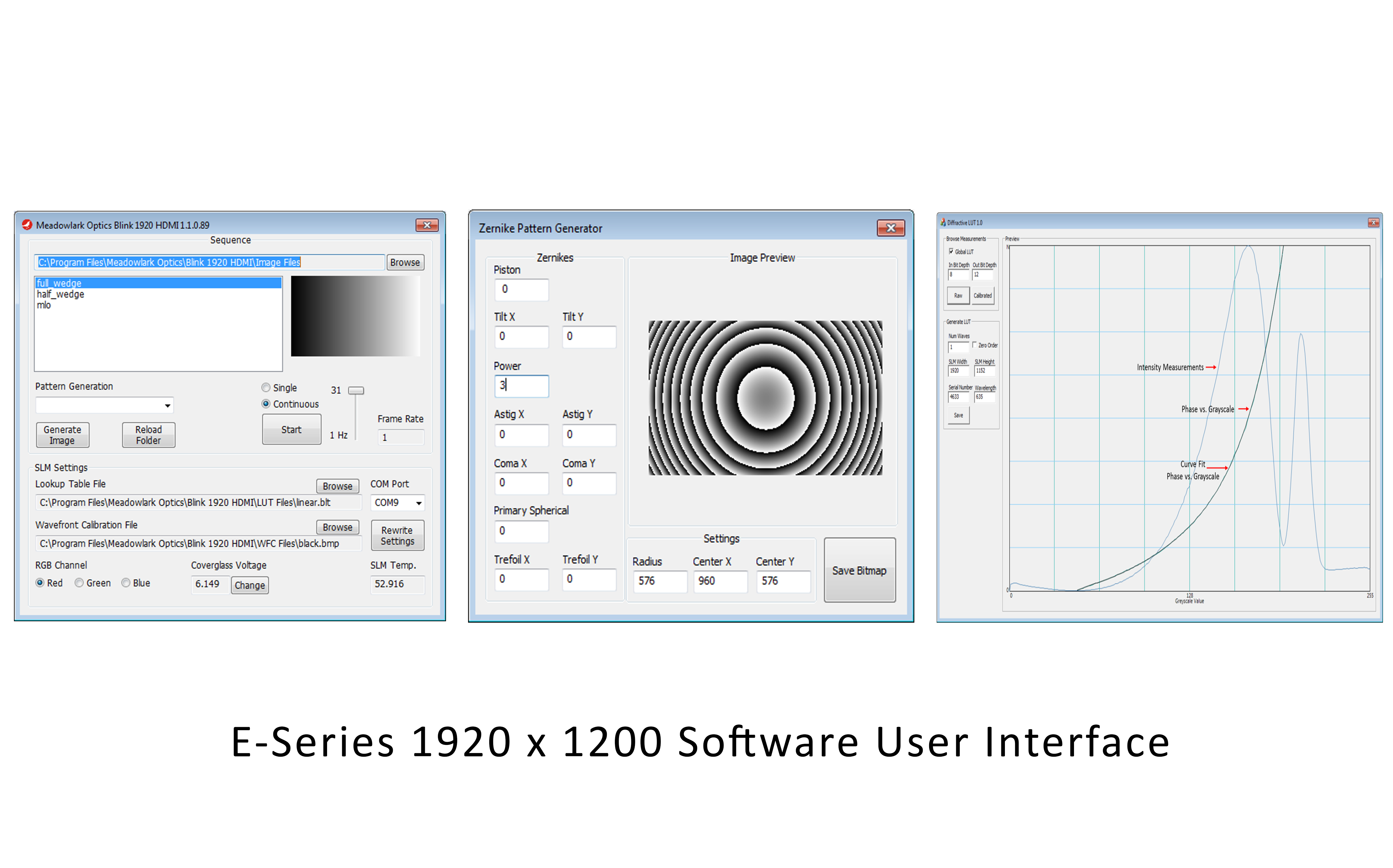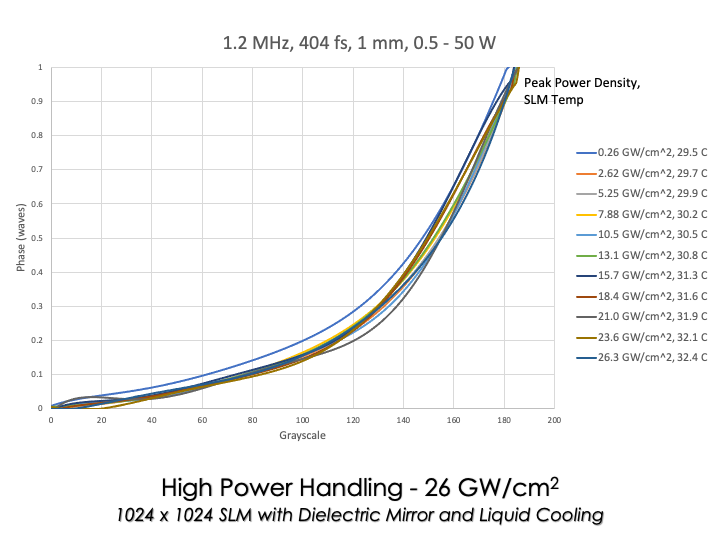Meadowlark Optics’ Liquid Crystal on Silicon (LCoS) Spatial Light Modulators (SLMs) are designed for pure phase applications, featuring analog data addressing with high refresh rates (1400 Hz) for fast response times and high phase stability. The 1024 x 1024 SLM is ideal for high-speed applications, offering high diffraction efficiency, low phase ripple, and compatibility with high-power lasers.
The SLM achieves high phase stability (0.05% to 2.0%) without compromising speed, using a combination of analog drive schemes and proprietary technologies. The silicon backplane enables high-speed operation with liquid crystal response times ranging from 0.6 to 8 ms.
The Thermoelectric Cooler (TEC) allows users to control the operating temperature of the SLM, influencing switching speed and phase stability. The SLM’s diffraction efficiency is measured in the 0th and 1st order, accounting for losses in coverglass coatings, pixel pads, and diffraction. A high-efficiency dielectric mirror coating minimizes amplitude and optical path variations.
Meadowlark’s SLMs come with a graphical user interface and software development kits supporting LabVIEW, Matlab, Python, and C++. The software enables image generation, aberration correction, global/regional optical response calibration, sequencing, and temperature monitoring.
Global or regional calibrations provide high spatial phase fidelity by characterizing the phase response and calibrating pixel by pixel. The SLM’s image generation capabilities include Bessel beams, lens functions, gratings, and diffraction patterns. An optional Look-Up-Table Calibration Kit allows users to customize the LUT based on their wavelength and operating temperature, providing optimal performance.









